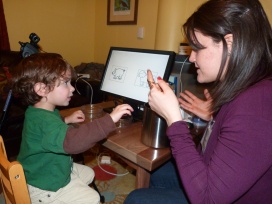Mid-West & Southern Region


States in this Region: AR, IA, IL, IN, KS, MI, MN, MO, ND, NE, OK, SD, TX, WI
Learn more about the Madison Living Lab.
Wildernest at the Madison Children’s Museum: The Wildernest is designed to serve children ages birth to 5. It’s a wonder-filled global village alive with light, texture, color, and boundless opportunity. Wildernest is built almost entirely out of natural materials and sustainably harvested local hardwoods that increase sensory appeal and model replicable best practices for indoor learning environments. Small activity huts provide culturally responsive, open-ended activities that offer children myriad opportunities to learn about science, math, and the arts. Other notable features of Wildernest include the Bone Bridge; a raised platform and tree house; a slide to enter the area; a water dome that allows for pouring, dumping, and painting; a horizontal climbing wall; a safe, comfortable infant play area; and the Cozy Cottage, a parent resource room filled with early learning materials where visitors can calm a child or feed a baby. The Wildernest Living Lab was established in January 2012, with University of Wisconsin, Madison as their academic partner.
Social Kids Lab at the University of Wisconsin - Madison: Research projects in the Social Kids Lab are focused on the development of social cognition in infancy and early childhood. The lab is particularly interested in understanding the origins of social categories and ingroup-outgroup biases. We are currently investigating a number of questions, including the following: (1) When do children come to see themselves and others as belonging to different social categories such as gender, race, ethnicity, and social class? (2) Which social distinctions matter most to young children? How does this change over development? (3) What information do children use to detect and learn about different social categories? (4) How does immersion in a particular culture affect children's attitudes toward different social groups? We address these questions through short behavioral studies of infants and young children.